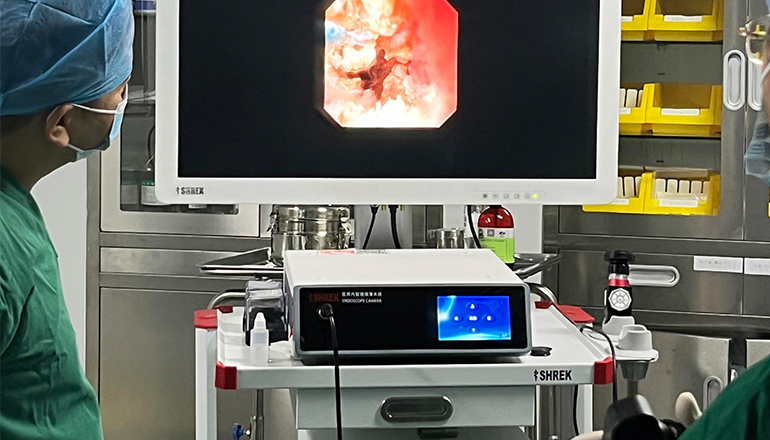- Shanghai, China
- [email protected]
- +86-21-58189111
Endoscopes are medical instruments that are used to visualize the internal organs of the human body. They come in different types, including rigid and flexible endoscopes. Rigid and flexible endoscopes differ in the way they are constructed and how they are used.
A rigid endoscope is a straight tube that is made of metal or plastic. It has a lens system at one end that allows the surgeon to see inside the body. The other end is attached to a light source and a camera that is used to capture images. The rigid endoscope is typically used for procedures that require a straight view of the area being examined, such as the throat, nasal passages, or urinary tract. The rigid endoscope can be used in a variety of medical procedures, including laparoscopy, hysteroscopy, and arthroscopy.
On the other hand, a flexible endoscope is a long, thin, and flexible tube that is made of rubber or plastic. It has a lens system at the tip that allows the surgeon to see inside the body. The flexible endoscope is typically used for procedures that require a curved or angled view of the area being examined, such as the digestive tract or the bronchial tubes. The flexible endoscope can be used in a variety of medical procedures, including gastroscopy, colonoscopy, and bronchoscopy.
One of the main advantages of the flexible endoscope is its flexibility. The flexible endoscope can be maneuvered around curves and bends in the body, allowing the surgeon to see areas that would be difficult to visualize with a rigid endoscope. The flexible endoscope also has a wider range of motion than the rigid endoscope, making it easier to use in tight spaces.

Another advantage of the flexible endoscope is that it is less invasive than the rigid endoscope. The flexible endoscope can be inserted through natural openings in the body, such as the mouth, anus, or nose. This means that there is less risk of damage to surrounding tissue or organs, and less risk of infection. Additionally, the flexible endoscope is typically less painful for the patient, as it does not require large incisions.
In summary, rigid and flexible endoscopes differ in their construction and usage. Rigid endoscopes are straight tubes used for procedures that require a straight view, while flexible endoscopes are long, thin, and flexible tubes used for procedures that require a curved or angled view. Flexible endoscopes offer several advantages over rigid endoscopes, including greater flexibility and less invasiveness.
However, there are also some disadvantages of using flexible endoscopes. They require a higher level of technical skill to use, as the flexible tube can be difficult to maneuver. Additionally, flexible endoscopes are more expensive than rigid endoscopes, which may make them less accessible in some healthcare settings.
In contrast, rigid endoscopes offer several advantages over flexible endoscopes. They are easier to handle and control, as they do not bend or flex. This makes them ideal for procedures that require a straight view. Additionally, rigid endoscopes are less expensive than flexible endoscopes, which may make them more accessible in some healthcare settings.
Overall, the choice between using a rigid or flexible endoscope depends on the specific procedure being performed and the patient's individual needs. While flexible endoscopes offer greater flexibility and less invasiveness, they also require a higher level of technical skill and are more expensive. Rigid endoscopes are easier to control and less expensive, but they may not be suitable for procedures that require a curved or angled view.
Leave a Comments